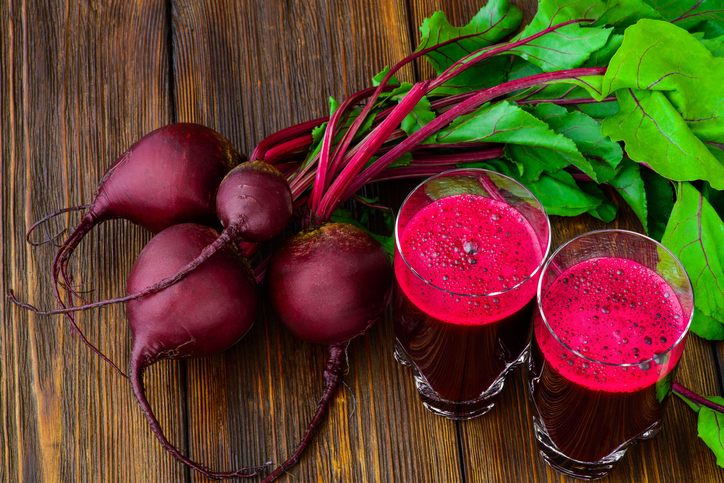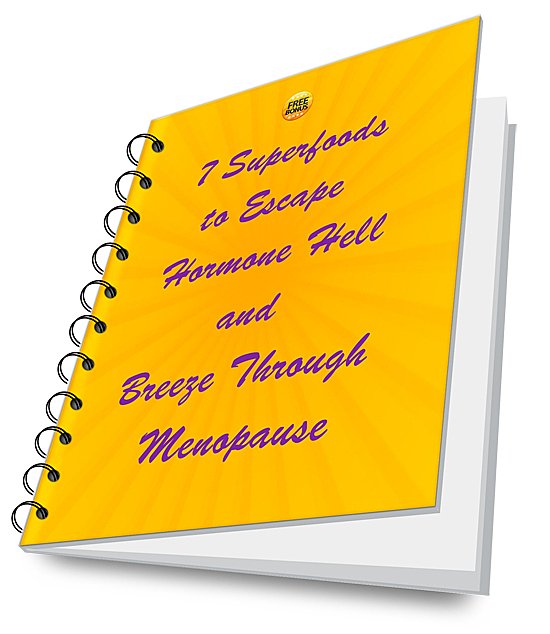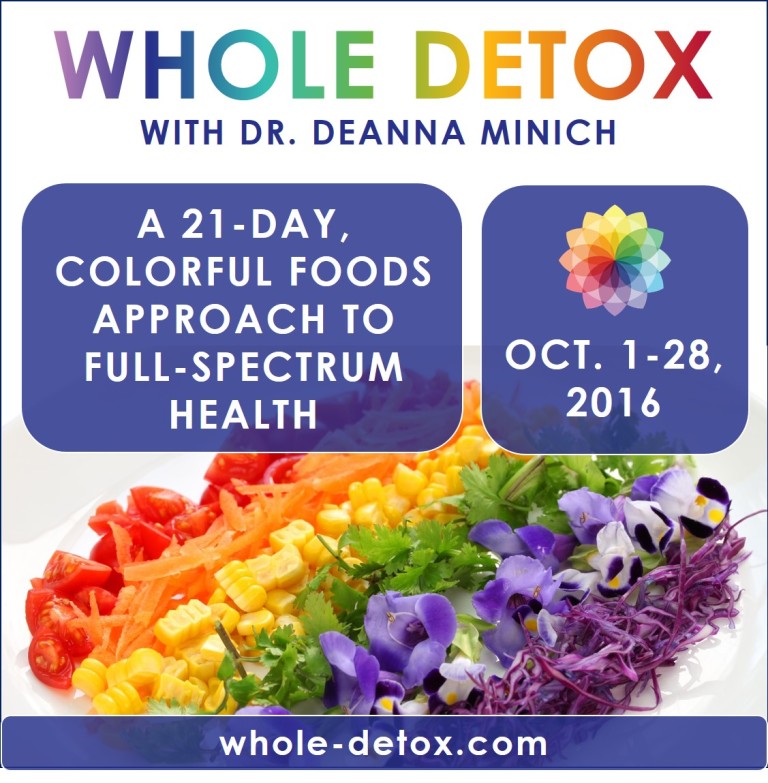Natural Remedies for Your Menopause Symptoms
Menopause and High Blood Pressure: The Food Solution
Menopause and high blood pressure go hand in hand. Unlike men, most women enjoy healthy blood pressure throughout middle age. But that changes with menopause.
You see, younger women have a secret weapon against high blood pressure. It’s the hormone estrogen. It works in many ways to naturally regulate blood pressure.

Estrogen helps:
- protect the inner layer of your artery walls;
- reduce levels of endothelin, which constricts blood vessels;
- increase nitric oxide, to dilate blood vessels; and
- increase elastin and collagen to build healthy blood vessels.
But at perimenopause estrogen levels start to drop. Nitric oxide goes down. Endothelin goes up. Blood vessel walls start to stiffen.
The end result is that as people reach their 60s, more women than men have high blood pressure because of the link between menopause and high blood pressure.
Why Menopause and High Blood Pressure Matter
High blood pressure is potentially deadly. Menopause and high blood pressure can lead to atherosclerosis (hardening of the arteries). It can triple your risk of heart attack. It can spike your risk of stroke seven-fold. And it’s the most common cause of kidney failure.
Bottom line? Menopause and high blood pressure can shorten your life by 10 to 20 years.
Sodium is just half the story
Most people don't know about the link between menopause and high blood pressure. They believe sodium in salt raises blood pressure. But studies show cutting down on salt reduced blood pressure only slightly for people with hypertension.
And a study in The Lancet found that people on so-called “healthy” low-salt diets were MORE likely to have heart attacks and strokes, and die than those who had moderate amounts of sodium in their diets.
That’s because when it comes to blood pressure, sodium is only half of the equation. The other half is potassium.
Researchers in the Netherlands looked at potassium consumption in 21 countries. They concluded that increasing potassium in your diet could contribute significantly to improving blood pressure.
In fact, adding potassium to your diet might get you the same results as cutting your table salt in half.
What is the vitality ratio?
The balance between sodium and potassium is so critical it’s been called the “vitality ratio.”
Here’s why. Potassium and sodium work together to maintain your body’s optimal fluid levels. When your sodium levels drift up, your body retains fluid putting pressure on your blood vessels. Potassium helps excrete the excess sodium in your urine.
Potassium also relaxes blood vessel walls helping to relieve blood pressure.
But most of us don’t get enough potassium. The Netherlands study found that average potassium intake varies between 1.7 and 3.7 grams a day. That’s much less than the 4.7 grams you should be getting.
The researchers found that increasing potassium to 4.7 grams per day would have the same effect on blood pressure as decreasing dietary salt by 4 grams. That’s huge.
How do you get more potassium into your diet?
Fresh fruits are great sources of potassium. And they help with menopause and high blood pressure. The highest levels are found in melons (cantaloupe, casaba and honeydew) which have almost 500 mg in a cup. Other excellent sources include figs, apricots, sun-dried tomatoes, bananas, nectarines, oranges, prunes and papayas.
When it comes to vegetables, the best sources are dark leafy greens like beet greens, spinach, and Swiss chard, as well as beets, avocados, artichokes. Other good sources include beans, bok choi, Brussels sprouts, Chinese cabbage, mushrooms, potatoes (skin on), squash, tomatoes and yams.

6 Foods For Menopause and High Blood Pressure
In addition to adding potassium-rich foods to your diet, try these six superfoods to get your blood pressure under control:
- Hibiscus Tea. In a double-blind trial patients drank either two cups of hibiscus tea or black tea a day. After 30 days the hibiscus tea lowered systolic pressure by a mean of 22 mmHg and pulse pressure by 18 mmHg. Black tea drinkers saw their pressure increase.
- Pomegranate Juice. In an Israeli study 101 kidney disease patients were randomized to receive 100 cc (a little over three ounces) of pomegranate juice or a placebo drink every day. After one year systolic blood pressure was significantly lower in the pomegranate juice group but not in the placebo group. Researchers concluded that drinking pomegranate juice regularly reduces systolic blood pressure and may reduce atherosclerosis. Another Israeli study found that one year of drinking pomegranate juice reduced systolic blood pressure by 12 percent.
- Beet Juice. Beets lower blood pressure thanks to high levels of nitrates. The British Heart Foundation funded a study of 68 patients with hypertension. Half the patients received about a cup of beetroot juice or a placebo juice containing no nitrates. Blood pressure in the nitrate group dropped a mean amount of 8.1/3.8 mmHg. In addition, endothelial function improved by about 20 percent and arterial stiffness was reduced in the beet juice group but not in the placebo group.
- Garlic. This veggie opens blood vessels and allows blood to flow unrestricted. Studies find garlic lowers systolic pressure by an impressive 20 to 30 mm Hg and diastolic by 10 to 20 mm Hg. In a study of 210 hypertensive patients, garlic significantly reduced blood pressure compared to a leading blood pressure drug.
- Coconut Water. In a West Indies study hypertensive patients who drank coconut water had significant drops in blood pressure in just two weeks. About 71 percent had significant decreases in systolic pressure, and 29% had significant decreases in diastolic pressure.
- Flaxseeds. These seeds contain omega-3 fats, lignans, and fiber that reduce blood pressure. In one double-blinded, placebo-controlled trial, 110 patients ate foods containing 30 grams of milled flaxseed or placebo each day. After six months systolic pressure went down about 10 mmHg and diastolic pressure dropped about 7 mmHg in the flaxseed group. The effect was even greater in patients with systolic pressure above 140 mmHg at the start of the study.
Click here for more on menopause symptoms.
References:
Wageningen University and Research Centre (2010, September 13). Consumption of 'good salt' can reduce population blood pressure levels, research finds. ScienceDaily. Retrieved July 15, 2012, from http://www.sciencedaily.com /releases/2010/09/100913161826.htm
He FJ, Li J, Macgregor GA. “Effect of longer term modest salt reduction on blood pressure: Cochrane systematic review and meta-analysis of randomised trials.” BMJ. 2013;346:f1325.
Yusuf S, Teo K, and Mente A, et al. “Associations of urinary sodium excretion with cardiovascular events in individuals with and without hypertension: a pooled analysis of data from four studies.” The Lancet. 2016. Volume 388, Issue 10043, 465 – 475.
Linda A. J. van Mierlo; Arno Greyling; Peter L. Zock; Frans J. Kok; Johanna M. Geleijnse. “Suboptimal Potassium Intake and Potential Impact on Population Blood Pressure.” Archives of Internal Medicine, 2010; 170 (16): 1501-1502.
H Mozaffari-Khosravi, B-A Jalali-Khanabadi, M Afkhami-Ardekani, et al. “The effects of sour tea (Hibiscus sabdariffa) on hypertension in patients with type II diabetes.” J Hum Hypertens. 2009;23(1):48-54.
Rizwan Ashraf, Rafeeq Alam Khan, Imran Ashraf, et al. “Effects of Allium sativum (Garlic) on systolic and diastolic blood pressure in patients with essential hypertension.” Pak J Pharm Sci. 2013;26(5):859-63.





